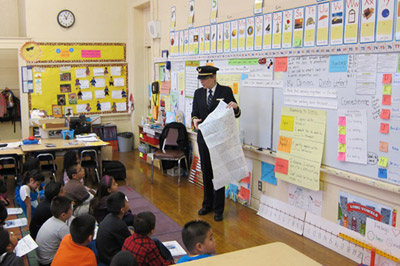
Civilian Programs 
Traditional pilot training programs follow an aviation authority’s regulations and guidance to earn licences and ratings in a required progression. These programs use ground and flight training to enable a pilot to continuously build on knowledge and skills.
Opportunities for pilot training are available at:
- Colleges or universities
- Local airports with a Flight Training Unit
Although you can obtain the licences and ratings necessary to become an airline pilot in all those training environments, the extent to which the training is coordinated and compressed to avoid training gaps can vary broadly. Professional pilot training in Canada falls under Part 400 of the Canadian Aviation Regulations (CARs) and, with the exception of integrated ATPL courses, every flight instructor in Canada, both freelancers and those working for a flight training unit, must follow the various flight training curriculums and outlines published by Transport Canada, a federal ministry.
Transport Canada oversees all flight training in Canada. All flight schools in Canada must seek Transport Canada approval, and these flight training units go through an extensive approval process. Regular audits monitor all aspects of the operation, from the quality of the aircraft and maintenance to the suitability of the training facilities, as well as audits of their administrative activities, including enrollments. Transport Canada also administers all written exams and flight tests. Quality of flight training is enforced by measuring individual instructors’ success rates in recommending their candidates for flight tests. An 80% success rate is required by instructors to avoid disciplinary action. Freelance instruction on a student’s own aircraft is less common, but also available, and subject to the same standards of training and auditing; however, instructors in Canada may not teach on their own privately owned aircraft. This ensures the correct standards of aircraft maintenance and liability are maintained.
Various flight training units may enter in partnerships with local universities and colleges to help further the education of their students or assist in the recruitment of foreign students by the partner university/college. The benefits of these partnerships can vary greatly based on the amount of cooperation (or lack thereof) between the flight training unit and the partnered university/college. Where some are partners purely for marketing purposes, others can have well-established curricula and ideally a fully integrated course.
The airline transport pilot licence (ATPL)–integrated course is the highest level of learning a pilot can achieve in the current Canadian flight training system. The purpose of the integrated courses is to better prepare a student for work in the industry, with a large increase in focus on multicrew, multiengine operations, both of which have complex demands on a pilot. These courses vary in length from 12 to 36 months of more. While regulatory benefit of completing an integrated course might appear to be as basic as the early completion of the exams required for the ATPL, the hugely expanded academic footprint of the integrated courses offer a much more thorough and longer-lasting education to their students, while simultaneously achieving post-secondary diplomas, associate degrees, and bachelor degrees.
ALPA believes the rules and policies provide appropriate incentives for future airline pilots to select a college/university pathway, which ultimately results in a well-trained, highly motivated pilot. In fact, ALPA has established professional development and/or mentoring programs at several colleges/universities in the United States and Canada, and visits dozens more each semester. More on university outreach.
No screening requirements currently exist to be admitted into any of the civilian flight training paths beyond qualifying for a Category 1 medical certificate and student pilot permit. However, prospective pilots must meet additional entry requirements to get into college/university programs (minimum high school grade point average, etc.), just like any other university program.
If you choose one of these civilian routes, you must obtain at least a commercial pilot’s licence after earning the private pilot licence plus an instrument rating, multiengine rating, and often a flight instructor rating. Obtaining the licenses and ratings in a sequential order ensures that you develop the necessary skills and maturity to make decisions in increasing levels of responsibility. More on qualifications for Canadian airlines.
Once you hold the commercial licence, you are qualified to seek employment in entry-level commercial flight operations. You can pursue a wide variety of options, such as a first officer at smaller airlines in Canada, charter or corporate pilot, flight instructor, or scheduled air taxi pilot, among other options. More on types of jobs.
There is a wide range of time associated with the civilian program pathway. From the first day of training until you complete training for a commercial license and then build the flight experience necessary to reach the ATPL, the amount of time needed varies dramatically. Typically, you should anticipate a period of two to six years.

